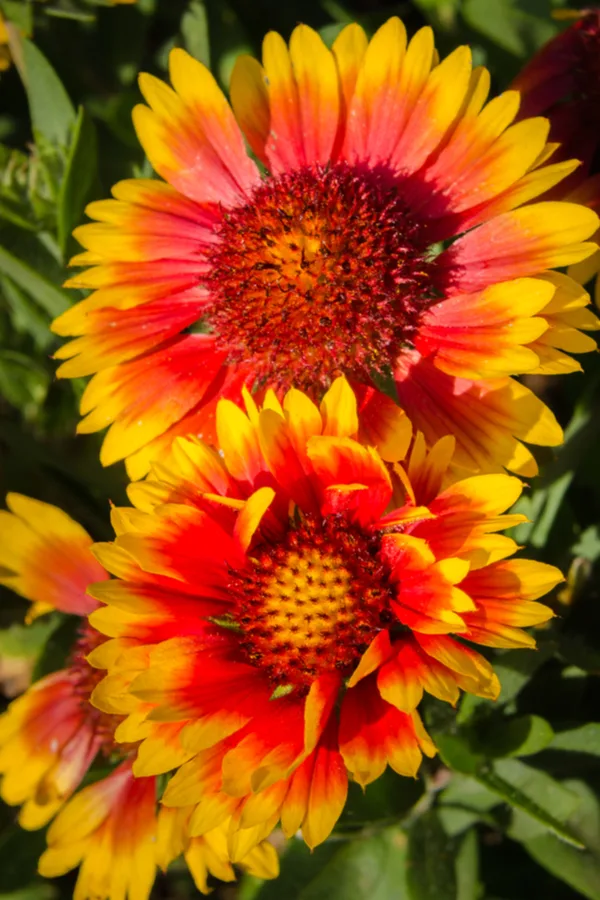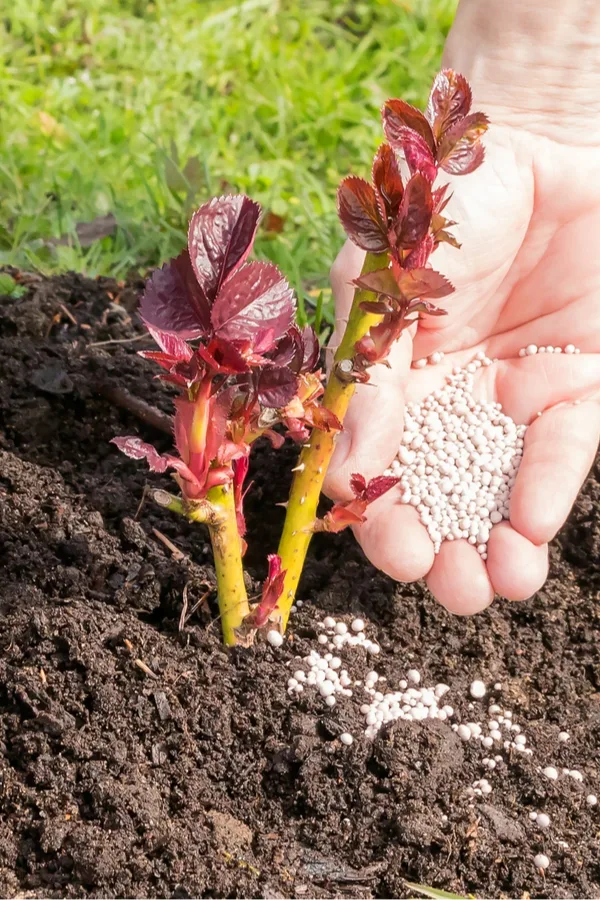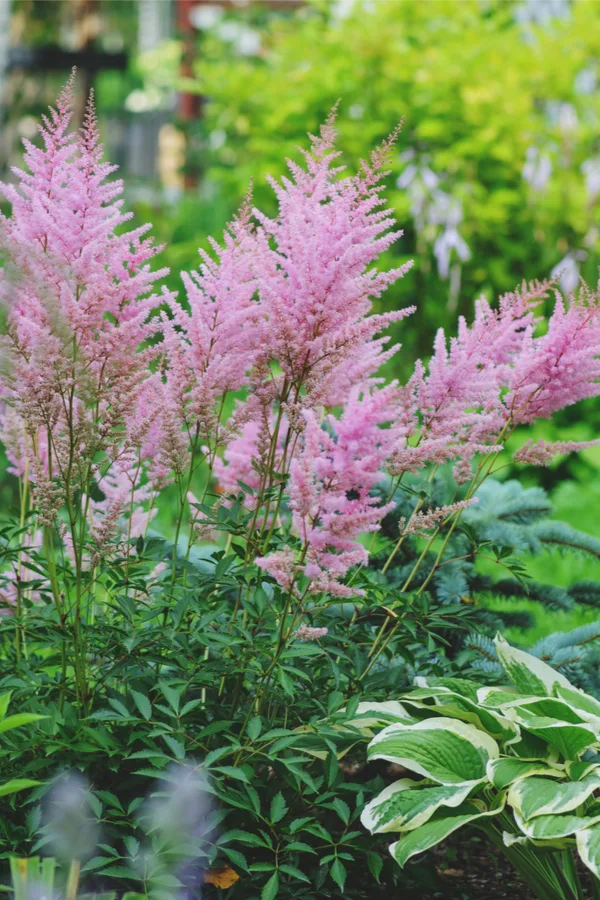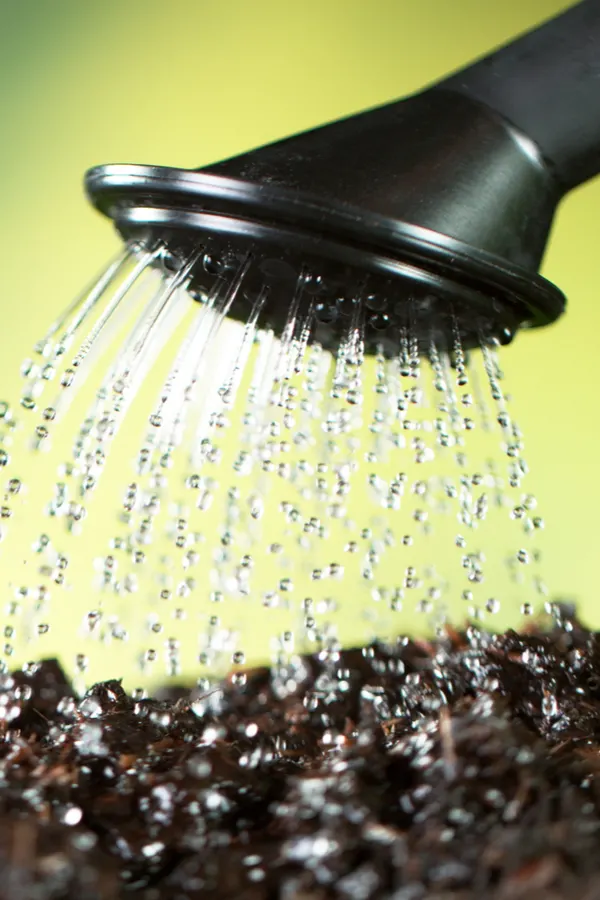One of the best ways to power up your perennial plants for better growth and bigger blooms is by giving them the right dose of fertilizer at just the right time.
It goes without saying, perennials plants are the backbone of most home flowerbeds. Unlike annual flowers, perennials add texture and color to the landscape year after year. As an added benefit, they also don’t require the constant season maintenance that their annual counterparts often do.
Most perennials flower for only two to three weeks each season. But when they do bloom, they can light up your flowerbeds with amazing color. Better yet, even when they aren’t flowering, they still provide plenty of greenery and texture wherever they grow.

Although perennials don’t require constant care, they do benefit tremendously from the simple chore of fertilizing. Not just to help grow their foliage, but even more to power bigger and brighter bloom sets.
One thing is for sure, generating foliage and flower power can take a lot of resources. Since perennials grow in the same soil season after season, it is easy for them to run out of available energy without help. And that is exactly where fertilizing can play a key role in filling the gap.
With that in mind, here is an in-depth look at how and when to fertilize your perennials!
How To Fertilize Perennial Plants
Selecting The Right Fertilizer
There are two basic types of fertilizers you can use for energizing perennials. The first are dry granular fertilizers. Granular fertilizers are usually applied on top of the soil around a plant’s root zone. Granular fertilizers break down slowly to help feed plants over a longer time period.
The second type of fertilizer you can use for perennials are liquid-based fertilizers. Liquid fertilizers supply power in two separate ways to plants.

The first is by leaching their nutrients into the soil and absorbing through the roots. The other is by absorbing through the foliage and stems of plants. Because of this dual effectiveness, liquid fertilizers supply their energy more quickly to plants.
As you will see below, both granular and liquid fertilizers have their place for powering perennials. In fact, when used together, they give plants the best chance for overall health – and big blooms too!
When To Fertilize Perennial Plants
When it comes to perennials, there are two key time frames where providing added power can really benefit your plants.
The first is in early spring, when they are just coming out of their dormant stage. The second is right before or as a perennial is coming into bloom. And it doesn’t matter if it’s coral bells, or even if you grow hops! Let’s start by taking a look at each of these two specific time periods, and how to best fertilize for each one.
Early Spring Fertilizing
For nearly all perennials, an early spring dose of fertilizer is key. This helps them develop strong roots and healthy foliage. The best time to apply this dose is just before or right as your perennials are emerging from the ground and starting to leaf out.
Check out our Podcast below on Fertilizing Vegetable Gardens!
As a plant comes out of its dormancy stage, it needs fuel to power early growth. The healthier and stronger a plant’s roots and foliage grows early in the season, the more it can power blooms when it comes time to flower.
For early spring fertilizing, granular fertilizers are the best choice. At this point, it is not about energizing the plant quickly for bloom power, but trying to supply steady power for great plant growth.
Granular fertilizers are perfect for slowly releasing their nutrients to plants. As they break down in the soil, they leach into the plant’s root system. This slow and steady approach is exactly what perennials need for early spring power.
Select a good all-purpose fertilizer with a balanced N-P-K (Nitrogen, Phosphorous, Potassium) ratio. Fertilizers with a 5-5-5 or 10-10-10 ratio or somewhere in between are your best bet. These are strong enough to supply good power without overpowering plants. Product Link : 10-10-10 All Purpose Fertilizer
Fertilizing Perennial Plants Before They Bloom
When it comes to fertilizing for bigger and brighter blooms, liquid fertilizers are the better choice. Liquid fertilizers should be applied to your plants right before or as they are coming into bloom.

As a perennial plant begins to flower, it uses a tremendous amount of resources in the process. Liquid fertilizers help re-energize the plant by supplying a quick boost of energy. Energy that absorbs quickly into the plant’s roots and foliage.
Compost tea, worm casting tea, or commercial liquid fertilizer work wonders for powering blooms at this point. For best results, apply in two separate doses. Apply the first as the perennial is just coming into bloom. Then, apply a second boost halfway through the blooming period. The two applications are best usually about two weeks apart.
This dual dose will help supply energy to see the plant through the entire bloom cycle. Not only will the first blooms benefit, but so will the final flush of flowers as well.
When Not To Fertilize Perennial Plants
Believe it or not, there is a time when fertilizing your perennials can put them in harms way. For the large majority of perennial plants, fertilizing in mid to late fall can spell disaster. Fertilizing should always be avoided during this time.
By the time fall rolls around, perennials are beginning to wind down their growth. Instead of using energy to power more leaves or blooms, they begin to store the energy to protect themselves through the winter.

Unfortunately, when fertilizer is applied to perennials in the fall, it disrupts this entire process. Instead, the power boost can re-energize the plant, causing it to begin to grow both new roots and foliage.
Why Not To Fertilize In The Fall
Although that may not sound like an issue on the surface, it can leave plants vulnerable for winter. Especially if the winter happens to be extremely cold or harsh.
Once the bitter cold settles in, any new tender root growth can easily freeze and die. In addition, because the plant began to power up right before dormancy, it doesn’t always have the stored energy that is usually available to help it through.
This can leave a plant vulnerable to freezing out over winter. And even if they do survive, they can be far less healthy and produce far fewer blooms.
Here is to fertilizing your perennial plants for success this year – and for years to come!
Follow Our Facebook Page For Great Gardening Tips And Advice! This Is My Garden Facebook Page
This Is My Garden is a garden website created by gardeners, for gardeners. Jim and Mary Competti have been writing gardening, DIY and recipe articles and books and speaking for over 15 years from their 46 acre Ohio farm. They publish three articles every week, 52 weeks a year. Sign up today to follow via email, or follow along!
